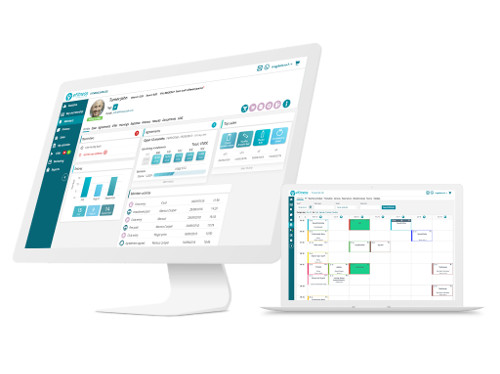At the beginning of every year, we typically see a surge of new members join health clubs, bidding to ‘make a change’, by increasing their exercise participation levels for a variety of different reasons. Unfortunately, each year, around a third of all those ‘New Years Resolutioners’ give up within just 3 months and return to their former ways. Sad. but true!
As fitness industry operators, we MUST stop relying on the acquisition of new members every January, instead we should place more focus on how we build better relationships with our ‘New Years Resolutioners’, especially within their all-important, first 90 days.
When we look at ‘drop-out’ rate among gym goers, it’s wise to look at the mechanics of exercise psychology to gain some understanding of why it happens.
So, check the below model out…
A model of behaviour change – The Transtheoretical Model
This particular model is used by professionals in health settings all over the world. It implies that humans go through key ‘Stages of Change’ in order to elicit positive behaviour change; e.g, exercise adoption, or the cessation of maladaptive behaviour; e.g binge-eating and smoking. For health club operators, we particularly want to understand this model from an ‘exercise adoption’ perspective and understand the 6 Stages of change.
Next, I’ll do my best to explain the 6 stages of the Trans-theoretical Model;
Precontemplation
People in the ‘Precontemplation’ stage are not aware they have a problem, and as a result, they have no intention to take action to solve their problems in the foreseeable future. In this case, when we consider exercise, the problem for a person not exercising is that it may lead to health problems further down the line. If a person is uninformed about the detrimental effects associated with a lack of exercise, it’s unlikely they’ll ever move from the Precontemplation stage.
If a person has made many attempts to exercise before but not experienced success, it can lead to a feeling of demoralisation, and often those people may find themselves falling back into the Precontemplation stage. This is why health club operators must establish whether or not their members have exercised before and if they have had any success, as we must do our best to ensure someone does not fall back into Precontemplation stage from a more advanced stage within the TTM.
It’s doubtful that anyone in this stage will be joining your facility, but it could be very likely that those who have quit your health club after not attending in 6 months have fallen into this stage. Rather than doing that Body Pump class once a week on a Monday at 7.30pm, they may now be sat in front of the TV at home, watching the soaps with a glass of wine in one hand, and a packet of crisps in the other. This isn’t what you want to see happening, and that’s why it is so important to monitor the activity levels of your members.
Contemplation
Those in the Contemplation stage have progressed slightly, they now have an intention to change within the next 6 months. Rather than being oblivious to the negative effects associated with lack of exercise, they could now be described as ambivalent, or in other words ‘neither here, nor there’. Because of these mixed feelings around the pros and cons of exercise, those in the Contemplation stage tend to procrastinate for long periods of time and often delay their exercise adoption.
Once again, it’s highly unlikely you will see members joining your gym when they are in the Contemplation stage, but they may well have been in this stage before entering the next stage – Preparation. Typical behaviour from someone in this stage may be opening emails from gyms, researching ways to exercise online and being responsive to facebook adverts despite never taking action. It is likely they may make promises such as the ‘health-kick starts next Monday’, but then never get round to doing it. Sound familiar?
Preparation (Ready)
Those in the Preparation stage intend to take action in the imminent future. After weighing up the pros and cons of adopting an exercise programme, they now feel that there are slightly more pros to taking part in an exercise regime and have their self-efficacy levels restored and the desire and motivation to change.
Typical behaviour of someone in the exercise preparation stage is buying a new pair of trainers, joining a gym, and downloading a nutrition-tracking app to start watching their food intake. Many members who have not been exercising for a while, but have recently joined your facility, will be in this Stage of Change. It is now your prerogative to get these members to the next level of change.
So, how are YOU going to do it?
Action
Those in the Action stage have made significant advancements in their lifestyles within the past six months. Typically, someone in the action stage may be meeting the NICE recommended physical activity guidelines and as a consequence, may have started to experience some success with their exercise goals.
You may see a lot of members in the action stage within your health club. Depending on the member’s knowledge and experience levels, they may require a little more education to progress to the next stage. We don’t want those in the action stage to relapse back into contemplation so it’s important we use the right techniques to get these people to the next level within the Stages of Change – maintenance.
What system do you have in place to identify these people?
Maintenance
Those in the Maintenance stage have now made all the progressions they need to stay active and see exercise as a habit, and a part of their daily routine – the dream, right? While in the Maintenance stage, people are far less tempted to relapse and are more confident in their ability to continue their exercise regime.
Your members in the Maintenance stage may be visiting your gym more than 5 times per week – yes, really! They may be pushing themselves in the gym and look more like they are ‘training’ than merely exercising. They are more likely to use wearable technology and fitness apps as they understand the long term benefit or monitoring their exercise success.
If you see a lot of members in the Maintenance stage in your health club, it is likely that you foster a very successful member retention program; the two go hand in hand.
For members to progress through the stages of change, the right habits need to be formed, and the key throughout it all here is consistency.
Let’s use an example here;
Shirley, is a member of XYZ Health Club. She doesn’t use the gym or the swimming pool but she has booked on to the same class – Zumba, three times per week, at the same times, every week for the last 3 months.
In this instance, Shirley has formed a habit. She is currently in the Action stage as she hasn’t been carrying out the habit for longer than six months, but for the last three months, her exercise adoption, with regards to Zumba attendance, has been positive. Rather than the gym, or the swimming pool, it is the Zumba class which is now part of Shirley’s routine. It will be much easier for Shirley to progress to the Maintenance stage if she continues to attend this class.
Time and time again, we see members who seldom use the gym but love to attend classes. The nature of booking a class makes members more accountable, which increases the likelihood of them will show up. Additionally, as classes are perhaps more sociable and fun than simply running on a treadmill for 45 minutes, it makes it much easier to go back.
So as a health club operator, what can you glean so far? By offering an amazing class timetable, you will not only appeal to more prospects looking to join your facility, but you will be creating the foundations for your existing members to form habits and stay with you for longer.

How do you ensure you offer a ’1st Class Experience’?
Offer variety in the type of classes.
If you want to offer a timetable that appeals to everybody, it must have as much variety as possible. You may find that people like to attend many different types of classes to achieve different kinds of goals. We would recommend having a timetable which consists of; Strength and Conditioning. (e.g Pump, HiiT, Circuits), Stretch and Flex. (e.g Yoga, Pilates) and Dance. (e.g Boogie Bounce, Zumba, Bokwa). You should consider offering more than one type of class within these categories to make sure you are creating a class timetable that is received well by all.
Add new classes at the right times.
Members like to see their feedback being listened to. Make sure your class timetable is commendable at all times of the day. It’s no good having an awesome timetable in the evenings at peak times if your morning classes leave a lot to be desired. You should invest time in looking at the member profiles of your class attendees. Analyse the times of day these members are checking in and tailor your timetable accordingly.
Monitor occupancy levels.
One of the best ways to get feedback is to look at the attendance levels. However, if a class has low occupancy, don’t just strike it off the timetable before understanding why. Look at all the possible reasons for this. Is it to do with times of day, the day of the week, the type of class, the instructor, or perhaps it just clashes with other popular classes? Of those who are booked on, how many are regulars? Once you’ve assessed all reasons, the next step is to gather online and offline feedback related to the class from your members and take action accordingly.
Change the workout, not the class type.
Progression is key for any gym programme, so mixing HiiT up will prevent each workout from becoming tedious. Adding in progressions and different exercises to your Circuit stations will go down well with most. What will NOT go down well is switching your class categories. Don’t change your dance class to a stretch and flex class or your Body Pump to a Cycling class. Naturally, this will upset too many people, instead, add in some new routines to your dance classes and some new poses to your pilates class or play the latest Body Pump release to keep things interesting.
Feature GX in the on-boarding programme.
By featuring a ‘new member class’ on your timetable it will be a wonderful opportunity for your newbies to meet like-minded individuals during the very first stages of their customer journey. It will also be a powerful introduction to Group Exercise, and as we know, if a member is engaged with Group Exercise, they are far more likely to stay connected with you long-term.
Run your timetable based on your location.
Every location you are based in will have different wants and needs when it comes to group exercise. It’s important to acknowledge that what your competitors have done in the past, this will undoubtedly have some effect on your members’ expectations. Listen to your members and put on the classes they are crying out for.
A closing word on classes
Now it’s over to you. Your members who take part in Group Exercise are 26% less likely to cancel their membership than your ‘gym only’ members. Start delivering a 1st Class experience from the very first touch of a button in the booking process to the final plank and farewell.






